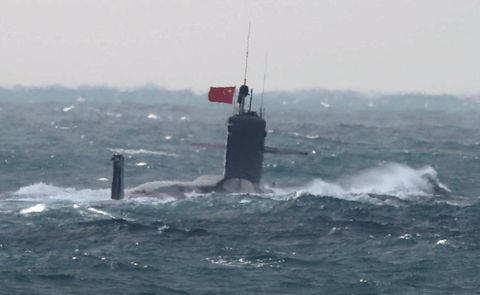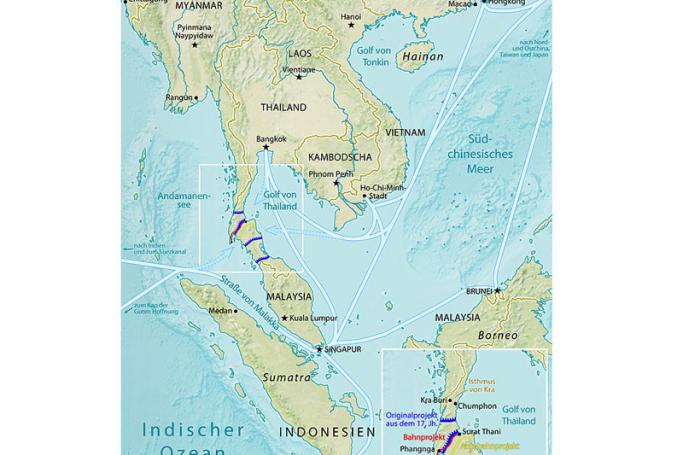- Joined
- Jun 27, 2018
- Messages
- 31,515
- Points
- 113
Did China learn secrets from French sub attack?
Most people were fast asleep in their beds in 2015 when a French submarine named the Safir apparently sent half a US navy carrier battle group to Davey Jones’ locker.
Didn’t hear about it? That’s because it was just another exercise, one of many military operations that never make the mainstream media.
According to a special report by Lyle J. Goldstein of The National Interest, the revelation that a US Navy aircraft carrier group as powerful as the Theodore Roosevelt could be so vulnerable to a nuclear sub — and French, at that! — did not make many waves, and no mention was made by the many attentive online defense analysts.
The report allegedly appeared and then quickly disappeared — no doubt France didn’t want to ruffle the feathers of an ally as powerful as the US.
However, the Chinese defense media does not miss much — analysts are always diligently probing for cracks in the US defense shield’s armor.
In fact, a special issue of 兵工科技 [Ordnance Industry Science and Technology] (2015, no. 8) covered this “event,” featuring an interview with Chinese Submarine Academy professor 迟国仓 [Chi Guocang] as its cover story under the title: “A Single Nuclear Submarine ‘Sinks’ Half of an Aircraft Carrier Battle Group.”
Prof. Chi makes clear that an exercise can hardly be compared to real combat and that, moreover, he evaluates US Navy anti-submarine warfare (ASW) to be a “highly efficient” system comprised of multiple layers of defense for an aircraft carrier, the report said.
Yet, he concludes that the French report “有比较大的可信度” [has a reasonably high degree of credibility].
At the outset, Prof. Chi asserts that submarines are the “克星” [nemesis] of aircraft carriers. Over the course of World War II, no less than seventeen aircraft carriers were sunk by submarines on both sides, the report said.
So, how is it that the French Navy was able to penetrate the formidable American ASW screen around the aircraft carrier USS Roosevelt, allegedly “sinking” the big deck and some of its escorts too?
Prof. Chi offers many hypotheses, but focuses in particular on the small displacement of the French submarine. He observes that the Rubis-class submarine is the world’s smallest nuclear submarine (2,670 tons submerged) and that could make it more difficult to detect, the report said.
Meanwhile, the Los Angeles-class submarines protecting the aircraft carrier have about three times the displacement — placing them at a distinct disadvantage, the report said.
Prof. Chi makes note of the comparative weaknesses of diesel submarines. However, he explains that very significant US air ASW assets are quite reliant on radar detections of submarines on or near the ocean surface, the report said.
Against nuclear submarines, therefore, he concludes that the air asset ASW search is “如‘大海捞针’一样难” [as difficult as fishing a needle from the vast ocean].
Other points include the observation that the larger the battle group, the easier it is to track this more conspicuous target at long distances, the report said.
Prof. Chi also notes that the employment of ASW weaponry can inadvertently aid a submarine’s escape following an attack, because the weapons may significantly complicate the acoustic environment, thus hindering searches for the attacking submarine, the report said.
Another possible explanation for the skillful (simulated) attack of the Safir might be the French commander’s capable use of naturally occurring complex hydro-acoustic conditions.
Prof. Chi describes a long list of such conditions, including well known phenomena such as “convergence zones,” “sound speed gradients,” as well as the more mysterious “cold eddy” [冷涡] and “afternoon effect” [午后较应].
Asia Times Financial is now live. Linking accurate news, insightful analysis and local knowledge with the ATF China Bond 50 Index, the world's first benchmark cross sector Chinese Bond Indices. Read ATF now.
Most people were fast asleep in their beds in 2015 when a French submarine named the Safir apparently sent half a US navy carrier battle group to Davey Jones’ locker.
Didn’t hear about it? That’s because it was just another exercise, one of many military operations that never make the mainstream media.
According to a special report by Lyle J. Goldstein of The National Interest, the revelation that a US Navy aircraft carrier group as powerful as the Theodore Roosevelt could be so vulnerable to a nuclear sub — and French, at that! — did not make many waves, and no mention was made by the many attentive online defense analysts.
The report allegedly appeared and then quickly disappeared — no doubt France didn’t want to ruffle the feathers of an ally as powerful as the US.
However, the Chinese defense media does not miss much — analysts are always diligently probing for cracks in the US defense shield’s armor.
In fact, a special issue of 兵工科技 [Ordnance Industry Science and Technology] (2015, no. 8) covered this “event,” featuring an interview with Chinese Submarine Academy professor 迟国仓 [Chi Guocang] as its cover story under the title: “A Single Nuclear Submarine ‘Sinks’ Half of an Aircraft Carrier Battle Group.”
Prof. Chi makes clear that an exercise can hardly be compared to real combat and that, moreover, he evaluates US Navy anti-submarine warfare (ASW) to be a “highly efficient” system comprised of multiple layers of defense for an aircraft carrier, the report said.
Yet, he concludes that the French report “有比较大的可信度” [has a reasonably high degree of credibility].
At the outset, Prof. Chi asserts that submarines are the “克星” [nemesis] of aircraft carriers. Over the course of World War II, no less than seventeen aircraft carriers were sunk by submarines on both sides, the report said.
So, how is it that the French Navy was able to penetrate the formidable American ASW screen around the aircraft carrier USS Roosevelt, allegedly “sinking” the big deck and some of its escorts too?
Prof. Chi offers many hypotheses, but focuses in particular on the small displacement of the French submarine. He observes that the Rubis-class submarine is the world’s smallest nuclear submarine (2,670 tons submerged) and that could make it more difficult to detect, the report said.
Meanwhile, the Los Angeles-class submarines protecting the aircraft carrier have about three times the displacement — placing them at a distinct disadvantage, the report said.
Prof. Chi makes note of the comparative weaknesses of diesel submarines. However, he explains that very significant US air ASW assets are quite reliant on radar detections of submarines on or near the ocean surface, the report said.
Against nuclear submarines, therefore, he concludes that the air asset ASW search is “如‘大海捞针’一样难” [as difficult as fishing a needle from the vast ocean].
Other points include the observation that the larger the battle group, the easier it is to track this more conspicuous target at long distances, the report said.
Prof. Chi also notes that the employment of ASW weaponry can inadvertently aid a submarine’s escape following an attack, because the weapons may significantly complicate the acoustic environment, thus hindering searches for the attacking submarine, the report said.
Another possible explanation for the skillful (simulated) attack of the Safir might be the French commander’s capable use of naturally occurring complex hydro-acoustic conditions.
Prof. Chi describes a long list of such conditions, including well known phenomena such as “convergence zones,” “sound speed gradients,” as well as the more mysterious “cold eddy” [冷涡] and “afternoon effect” [午后较应].
Asia Times Financial is now live. Linking accurate news, insightful analysis and local knowledge with the ATF China Bond 50 Index, the world's first benchmark cross sector Chinese Bond Indices. Read ATF now.



/arc-anglerfish-arc2-prod-mco.s3.amazonaws.com/public/RJYA5MJKBRAMXOTBACL6QRRC7E.jpg)
/arc-anglerfish-arc2-prod-mco.s3.amazonaws.com/public/S6SVEVXUJVC3VN7CFAVPNHUDPI.jpg)
/arc-anglerfish-arc2-prod-mco.s3.amazonaws.com/public/DRIOUSWCFRAY5E3G4GBFRHL72Q.jpg)


 Just like the allies. To buy from chinkland is a huge mistake.
Just like the allies. To buy from chinkland is a huge mistake.
